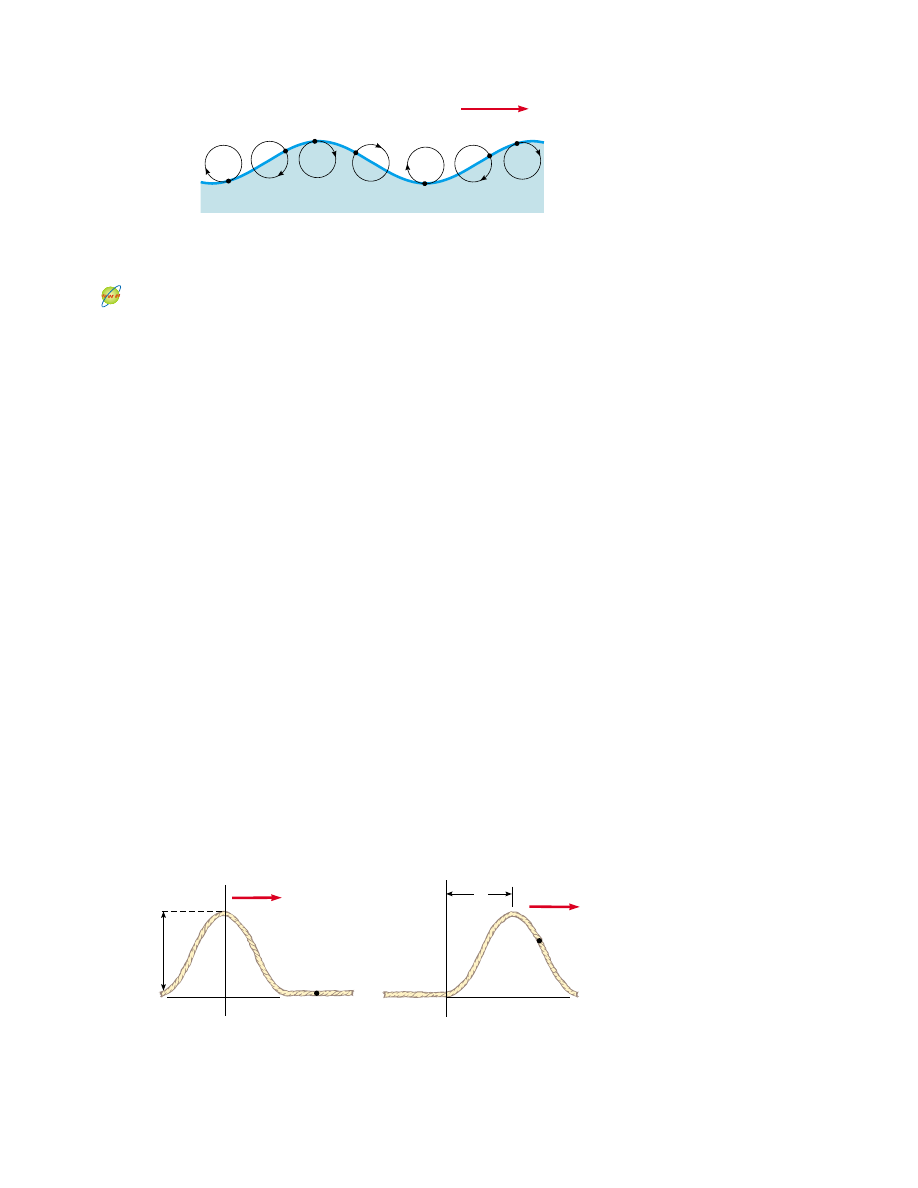Physics For Scientists And Engineers 6E - part 123

S E C T I O N 16 . 1 • Propagation of a Disturbance
489
components. The transverse displacements seen in Figure 16.4 represent the variations
in vertical position of the water elements. The longitudinal displacement can be ex-
plained as follows: as the wave passes over the water’s surface, water elements at the
highest points move in the direction of propagation of the wave, whereas elements at
the lowest points move in the direction opposite the propagation.
The three-dimensional waves that travel out from points under the Earth’s surface
along a fault at which an earthquake occurs are of both types—transverse and longitu-
dinal. The longitudinal waves are the faster of the two, traveling at speeds in the range
of 7 to 8 km/s near the surface. These are called
P waves (with “P” standing for pri-
mary) because they travel faster than the transverse waves and arrive at a seismograph
(a device used to detect waves due to earthquakes) first. The slower transverse waves,
called
S waves (with “S” standing for secondary), travel through the Earth at 4 to 5
km/s near the surface. By recording the time interval between the arrivals of these two
types of waves at a seismograph, the distance from the seismograph to the point of ori-
gin of the waves can be determined. A single measurement establishes an imaginary
sphere centered on the seismograph, with the radius of the sphere determined by the
difference in arrival times of the P and S waves. The origin of the waves is located
somewhere on that sphere. The imaginary spheres from three or more monitoring sta-
tions located far apart from each other intersect at one region of the Earth, and this re-
gion is where the earthquake occurred.
Consider a pulse traveling to the right on a long string, as shown in Figure 16.5.
Figure 16.5a represents the shape and position of the pulse at time t ! 0. At this time,
the shape of the pulse, whatever it may be, can be represented by some mathematical
function which we will write as y(x, 0) ! f(x). This function describes the transverse
position y of the element of the string located at each value of x at time t ! 0. Because
the speed of the pulse is v, the pulse has traveled to the right a distance vt at the time t
(Fig. 16.5b). We assume that the shape of the pulse does not change with time. Thus,
at time t, the shape of the pulse is the same as it was at time t ! 0, as in Figure 16.5a.
Active Figure 16.4 The motion of water elements on the surface of deep water in
which a wave is propagating is a combination of transverse and longitudinal displace-
ments, with the result that elements at the surface move in nearly circular paths. Each
element is displaced both horizontally and vertically from its equilibrium position.
Velocity of
propagation
A
y
(a) Pulse at t = 0
O
vt
x
O
y
x
v
P
(b) Pulse at time t
P
v
Figure 16.5 A one-dimensional pulse traveling to the right with a speed v. (a) At t ! 0,
the shape of the pulse is given by y ! f (x). (b) At some later time t, the shape remains
unchanged and the vertical position of an element of the medium any point P is given
by y ! f (x " vt).
At the Active Figures link at http://www.pse6.com, you can observe the
displacement of water elements at the surface of the moving waves.